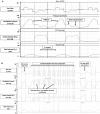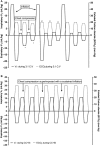Ventilation Strategies during Neonatal Cardiopulmonary Resuscitation
- PMID: 29484288
- PMCID: PMC5816046
- DOI: 10.3389/fped.2018.00018
Ventilation Strategies during Neonatal Cardiopulmonary Resuscitation
Abstract
Approximately, 10-20% of newborns require breathing assistance at birth, which remains the cornerstone of neonatal resuscitation. Fortunately, the need for chest compression (CC) or medications in the delivery room (DR) is rare. About 0.1% of term infants and up to 15% of preterm infants receive these interventions, this will result in approximately one million newborn deaths annually worldwide. In addition, CC or medications (epinephrine) are more frequent in the preterm population (~15%) due to birth asphyxia. A recent study reported that only 6 per 10,000 infants received epinephrine in the DR. Further, the study reported that infants receiving epinephrine during resuscitation had a high incidence of mortality (41%) and short-term neurologic morbidity (57% hypoxic-ischemic encephalopathy and seizures). A recent review of newborns who received prolonged CC and epinephrine but had no signs of life at 10 min following birth noted 83% mortality, with 93% of survivors suffering moderate-to-severe disability. The poor prognosis associated with receiving CC alone or with medications in the DR raises questions as to whether improved cardiopulmonary resuscitation methods specifically tailored to the newborn could improve outcomes.
Keywords: chest compression; delivery room; infants; neonatal resuscitation; newborn.
Figures


References
Publication types
LinkOut - more resources
Full Text Sources
Other Literature Sources

